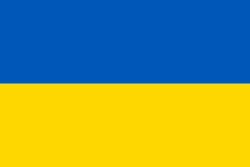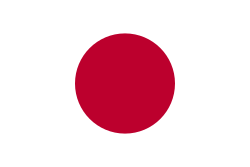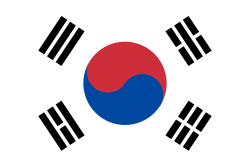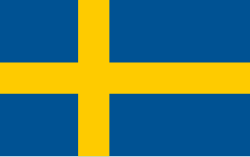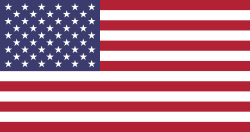Yang Tsung-hua
| Yang Tsung-hua | |||||||||||||
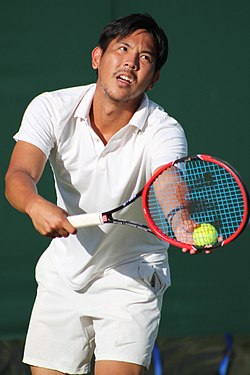 | |||||||||||||
| Yang 2015 in Wimbledon | |||||||||||||
| Nation: | |||||||||||||
| Geburtstag: | 29. März 1991 | ||||||||||||
| Größe: | 178 cm | ||||||||||||
| Gewicht: | 80 kg | ||||||||||||
| 1. Profisaison: | 2006 | ||||||||||||
| Spielhand: | Rechts | ||||||||||||
| Trainer: | Lhen Man | ||||||||||||
| Preisgeld: | 525.595 US-Dollar | ||||||||||||
| Einzel | |||||||||||||
| Karrierebilanz: | 7:19 | ||||||||||||
| Höchste Platzierung: | 164 (14. Mai 2012) | ||||||||||||
| Doppel | |||||||||||||
| Karrierebilanz: | 4:9 | ||||||||||||
| Höchste Platzierung: | 127 (15. Juli 2019) | ||||||||||||
| Aktuelle Platzierung: | 1191 | ||||||||||||
| |||||||||||||
| Letzte Aktualisierung der Infobox: 26. Dezember 2022 | |||||||||||||
| Quellen: offizielle Spielerprofile bei der ATP/WTA (siehe Weblinks) | |||||||||||||
Yang Tsung-hua (chinesisch 楊宗樺, Pinyin Yáng Zōnghuà, W.-G. Yang Tsung-hua; * 29. März 1991 in Hsinchu) ist ein taiwanischer Tennisspieler.
Karriere
Yang Tsung-hua spielt hauptsächlich auf der ATP Challenger Tour und der ITF Future Tour.
Er konnte bislang drei Einzel- und zehn Doppelsiege auf der ITF Future Tour feiern. Auf der ATP Challenger Tour gewann er bis jetzt neun Doppelturniere. Zum 26. September 2011 durchbrach er erstmals die Top 200 der Weltrangliste im Einzel und seine höchste Platzierung war ein 164. Rang im Mai 2012. Im Doppel durchbrach er erstmals zum 23. November 2009 die Top 150 und erreichte als Bestwert den 144. Platz im November 2009.
Yang Tsung-hua spielt seit 2008 für die taiwanische Davis-Cup-Mannschaft. Für diese trat er in elf Begegnungen an, wobei er im Einzel eine Bilanz von 5:12 und im Doppel eine Bilanz von 3:3 aufzuweisen hat.
Erfolge
| Legende (Anzahl der Siege) |
| Grand Slam |
| ATP World Tour Finals |
| ATP World Tour Masters 1000 |
| ATP World Tour 500 |
| ATP World Tour 250 |
| ATP Challenger Tour (12) |
Doppel
Turniersiege
Abschneiden bei Grand-Slam-Turnieren
Junioreneinzel
| Turnier | 2008 | Karriere |
|---|---|---|
| Australian Open | F | F |
| French Open | S | S |
| Wimbledon | AF | AF |
| US Open | HF | HF |
Juniorendoppel
| Turnier | 2008 | Karriere |
|---|---|---|
| Australian Open | S | S |
| French Open | VF | VF |
| Wimbledon | S | S |
| US Open | VF | VF |
Zeichenerklärung: S = Turniersieg; F, HF, VF, AF = Einzug ins Finale / Halbfinale / Viertelfinale / Achtelfinale; 1, 2, 3 = Ausscheiden in der 1. / 2. / 3. Hauptrunde; nicht ausgetragen
Weblinks
- ITF-Profil von Yang Tsung-hua (englisch)
- ATP-Profil von Yang Tsung-hua (englisch)
- Davis-Cup-Statistik von Yang Tsung-hua (englisch)
| Personendaten | |
|---|---|
| NAME | Yang, Tsung-hua |
| ALTERNATIVNAMEN | 楊宗樺 (chinesisch); Yáng Zōnghuà (Pinyin-Romanisierung) |
| KURZBESCHREIBUNG | taiwanischer Tennisspieler |
| GEBURTSDATUM | 29. März 1991 |
| GEBURTSORT | Hsinchu, Republik China (Taiwan) |
Auf dieser Seite verwendete Medien
Pictograms of Olympic sports - Tennis. This is unofficial sample picture. Images of official Olympic pictograms for 1948 Summer Olympics and all Summer Olympics since 1964 can be found in corresponding Official Reports.
Chinese Taipei Olympic Flag. According to the official website of Chinese Taipei Olympic Committee, Blue Sky(circle) & White Sun(triangles) above the Olympic rings is neither the National Emblem of the Republic of China, nor the Party Emblem of Kuomintang (KMT), but a design in between, where the triangles do not extend to the edge of the blue circle, as registered at International Olympic Committee in 1981 and digitally rendered in 2013. Besides, the blue outline of the five-petaled plum blossom is broader than the red one. Moreover, the CMYK code of the blue one and the Blue Sky & White Sun is "C100-M100-Y0-K0", and different from the Olympic rings (C100-M25-Y0-K0). Note that it's the only version recognized by IOC.
Flag of Canada introduced in 1965, using Pantone colors. This design replaced the Canadian Red Ensign design.
Man sagt, dass der grüne Teil die Mehrheit der katholischen Einwohner des Landes repräsentiert, der orange Teil die Minderheit der protestantischen, und die weiße Mitte den Frieden und die Harmonie zwischen beiden.
Die quadratische Nationalfahne der Schweiz, in transparentem rechteckigem (2:3) Feld.



